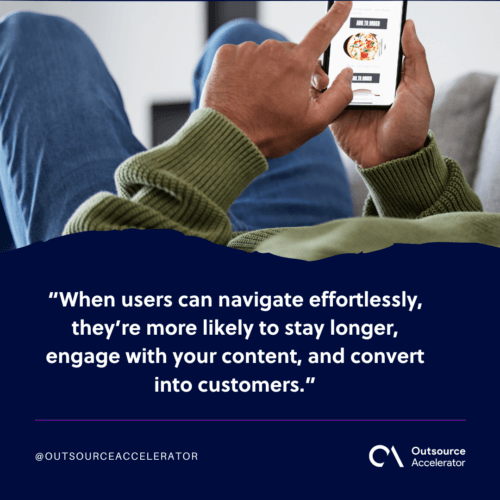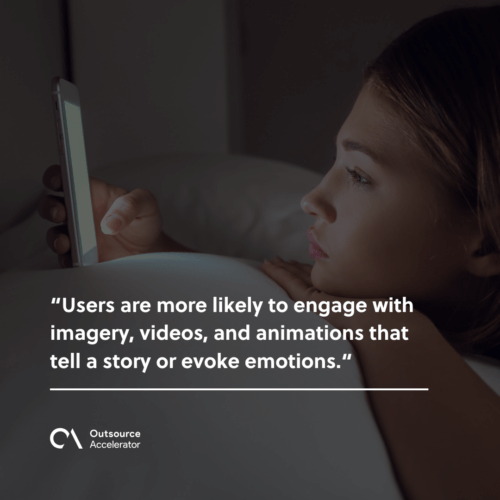Web design trends 2025: Building user-friendly, responsive websites that convert

In the ever-evolving digital landscape, web design continues to push boundaries, not just in terms of aesthetics but also in functionality and user experience.
Today, a website isn’t just your digital storefront; it’s a critical tool for engaging users, driving conversions, and building brand trust. In 2025, successful web design is all about combining cutting-edge trends with practical usability to create websites that are both visually appealing and user-centric.
Whether you’re launching a new website or revamping an existing one, understanding these emerging web design trends can help you stay ahead of the curve.
1. Why responsive design is non-negotiable
In 2025, responsive web design is no longer a trend—it’s a necessity. With mobile devices accounting for over 50% of global web traffic, a website must adapt seamlessly to various screen sizes.
Responsive design ensures that users on desktops, tablets, and smartphones have a consistent and enjoyable experience.
But responsive design is more than just a technical adjustment. It’s about ensuring the usability and accessibility of your website.
When users can navigate effortlessly, they’re more likely to stay longer, engage with your content, and convert into customers. A poorly designed mobile experience, on the other hand, can lead to high bounce rates and lost opportunities.
Key elements of responsive design in 2025:
- Fluid grids: Ensure that layouts adjust dynamically to different screen sizes.
- Flexible images: Use scalable images that maintain clarity without slowing down page load times.
- Touch-friendly features: Design buttons and forms that are easy to interact with on smaller screens

2. Minimalist design: Less is more
Minimalism has been a staple in web design for years, but its application continues to evolve. In 2025, minimalism is about more than aesthetics—it’s about creating a clean, distraction-free environment that prioritizes user intent.
Visitors often come to your website with specific goals. A cluttered design can hinder their journey and leave them frustrated.
Instead, a minimalist approach, with generous white space, simple navigation, and clear calls to action, helps users focus on what matters most.
Best practices for minimalist web design:
- Limit the number of colors and typefaces to create a cohesive look.
- Use whitespace strategically to highlight important elements.
- Opt for intuitive navigation menus that guide users effortlessly.
3. Dark mode and high-contrast designs
Dark mode isn’t just a trend—it’s a user preference. Many users find dark-themed websites easier on the eyes, especially in low-light environments.
Offering a dark mode toggle gives visitors the flexibility to choose how they view your site, enhancing user experience and accessibility.
Similarly, high-contrast designs are gaining traction. These designs focus on bold, contrasting colors to improve readability and draw attention to key elements like buttons and links.
Pro Tip: Make sure your dark mode design aligns with accessibility guidelines, ensuring that text remains legible against the background
4. AI integration: Smarter user experiences
Artificial intelligence (AI) has made its mark on web design, offering tools to create smarter and more personalized user experiences.
From chatbots that provide instant customer support to AI-driven content recommendations, integrating AI into your website can significantly enhance user engagement.
Examples of AI in web design:
- Chatbots: Answer customer queries in real-time, improving satisfaction and reducing bounce rates.
- Personalization: Display tailored product recommendations or content based on user behavior.
- Voice search optimization: Design for voice-activated queries, which are becoming increasingly popular.
5. Micro-interactions: Small details, big impact
Micro-interactions are small animations or design components that react to specific user actions. Think of a button that changes color when hovered over or a form field that shakes slightly when filled out incorrectly.
These small details add a layer of interactivity and can make your website feel more polished and engaging.
Popular micro-interaction trends:
- Smooth transitions between pages.
- Animated progress indicators for forms or loading screens.
- Hover effects on clickable elements.
6. Sustainability in web design
As the world becomes more conscious of environmental issues, sustainability in web design is emerging as a significant trend. Eco-friendly websites focus on reducing their carbon footprint through optimized performance and energy-efficient hosting.
Tips for a sustainable website:
- Keep resource-intensive components like autoplay videos and large images to a minimum.
- Optimize code for faster loading times.
- Choose green hosting providers that use renewable energy.
7. Content-first design: Prioritizing value
The phrase “content is king” will stay true in 2025. A visually stunning website will fall flat without valuable, engaging content.
A content-first design makes sure that the organization of your website is based on providing information in an understandable and engaging manner.
How to achieve content-first design:
- Plan your website’s content hierarchy before diving into design.
- Text should be broken up with bullet points, images, and clear headings.
- Include storytelling components to emotionally engage your audience.
8. Accessibility: Inclusive design for all
Accessibility is no longer optional—it’s a must-have for any website. Inclusive design ensures that people with disabilities can interact with your website seamlessly.
Beyond compliance with accessibility standards like WCAG, inclusivity enhances your brand’s reputation and expands your reach.
Key accessibility features:
- Text alternatives for images (alt text).
- Keyboard-friendly navigation.
- Descriptive link text for better context.
- High-contrast text and resizable fonts.
9. The role of visual storytelling
Visuals have always been a powerful tool in web design, but in 2025, visual storytelling is taking center stage. Users are more likely to engage with imagery, videos, and animations that tell a story or evoke emotions.
Consider using hero images, video backgrounds, or interactive infographics to convey your brand’s message.
These elements should complement, not overpower, the content to ensure a balanced and cohesive design.

10. Voice and gesture-based navigation
As technology advances, users are exploring new ways to interact with websites. Voice commands and gesture-based navigation are emerging trends that cater to tech-savvy users.
Incorporating these features can future-proof your website and appeal to a broader audience.
Getting started with voice and gesture design:
- Use question-based keywords and natural language to make your website voice search-friendly.
- Explore gesture-based features like swipe navigation for mobile users.
Ready to transform your website?
Creating a user-friendly, responsive website isn’t just about following trends—it’s about understanding your audience and delivering an experience that meets their needs.
Whether you’re looking to enhance your website’s functionality, update its design, or boost its performance, staying informed about the latest web design practices is crucial.







 Independent
Independent




